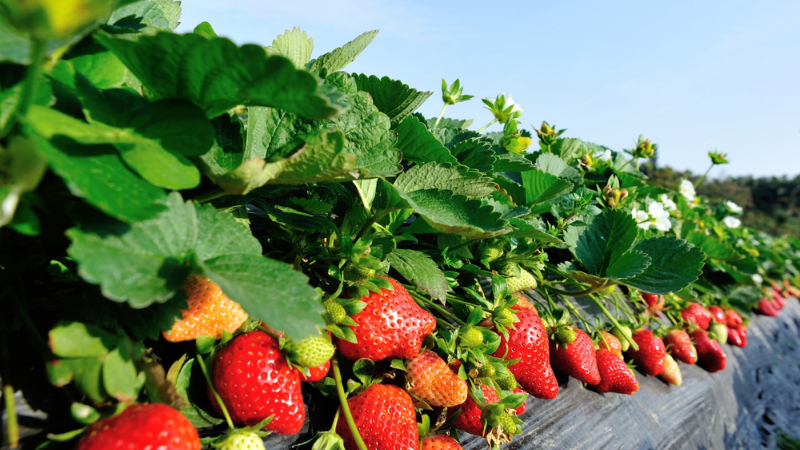New Variety Development A Long Process
If you are like many commercial fruit growers I know, you are always looking for that new “bullet-proof” cultivar that is perfect in every way: consistent cropping year after year, bud hardy, resistant or tolerant to pests/diseases, excellent in color, size, shape, taste, etc. — one that will be a real money maker!
You keep your eyes on the nursery catalogues and annual variety showcase featured in this magazine. Perhaps you attend Extension meetings in your state where specialists or breeders talk about new selections, and maybe you even see/taste them at a summer field day. Then comes the probing question, “How long until this variety is ready for growers?” Like my Clemson student in the photo on this page, when I was in college, I too participated in emasculations and pollinations for my dad’s peach breeding program in Harrow, Ontario. I asked the same question. The answer was usually, “Several years, son, if we’re lucky.” It was not very satisfying then and the groan from the students in March was audible.
It’s All In The Details
So what is the deal? New cultivar development for stone fruits is a long and arduous process. It begins with the breeder’s careful selection of parents for the controlled hybridization. Anthers from flowers of the appropriate male parent must be collected and allowed to dry so that the anthers dehisce and pollen is released. Early blooms that are already open and that may have been pollinated by bees are first removed.
The remaining flowers on the “female” parent tree must be emasculated (male parts physically removed) when the flowers are at the popcorn bloom stage. Some breeders, like our new breeder at Clemson University, Dr. Ksenija Gasic, like to pollinate all of the flowers on the particular tree with pollen from one source. The actual process of emasculation and pollination is simple and easy to do. Record keeping is very crucial in every step of the operation.
Assuming that pollination is successful and fertilization occurs, a peach will develop some months later. The fruit needs to be harvested when it is ripe. The seed that is inside the pit is then extracted and cold stratified. Eventually, seeds are sown in pots in the greenhouse to grow. The following spring, these seedlings are lined out at fairly close spacing in a breeding nursery and allowed to grow.
By making hundreds of pollinations of a particular parental combination, the hope is that genetic recombination will result in something that is better than either parent but that may retain the desirable characters of both. The odds are against this, and that is why so many hybridizations are needed.
As soon as these seedling trees begin flowering in the field, the breeder will begin evaluating them for their fruit characteristics and quality. Because of the sheer number of seedlings that exist and the time it takes to walk through these blocks, evaluations are rapid and rely strongly on the experience and art of the breeder. After perhaps two or three years of good evaluations in the seedling block, those that are most promising are selected for advanced testing.
Budwood is collected and propagated onto seedling rootstocks and grafted trees are produced. Depending on the breeder, like my colleague, Dr. Dick Okie (USDA-Agricultural Research Service, Byron, GA), selected collaborators are given trees to test for their performance at multiple locations over several years. We typically wanted five good years of performance data relative to industry standards the selections were compared against before considering a formal commercial release. As an example, for our two newest releases (2008), Early Augustprince and Augustprince, the original hybridization was done in 1995.
Worth The Wait
My experience with fruit growers over the last 30 years tells me they can be a pretty impatient lot. But new varieties are worth the wait. The painstaking effort to test these new babies at multiple sites over multiple years helps to ensure that no mistakes are made. The last thing any grower wants is to plant a 20-acre block of something that doesn’t come into production for three years and takes longer to make any money on, and then find out that the new variety is a “lemon.” I have been fooled in my own work with something that looked great one year and didn’t have a crop for the next two!
Finally, breeders are developing ways to expedite the process of new cultivar development. Some, for example, test trees both in the Northern and Southern hemisphere to reduce the time required for sufficient in-field evaluations. Others, like some of the private breeders, will actually grow trees in containers and move them in/out of cold storage to better synchronize flowering for breeding purposes. Efforts are currently being made through the federal Specialty Crop Research Initiative program to propose projects where molecular biologists will work closely with breeders and Extension specialists to use marker assisted selection and other techniques to make the aforementioned groan into a sigh.
Years of experience tell me that new tools will surely make a difference, but the proof will be in the field.










